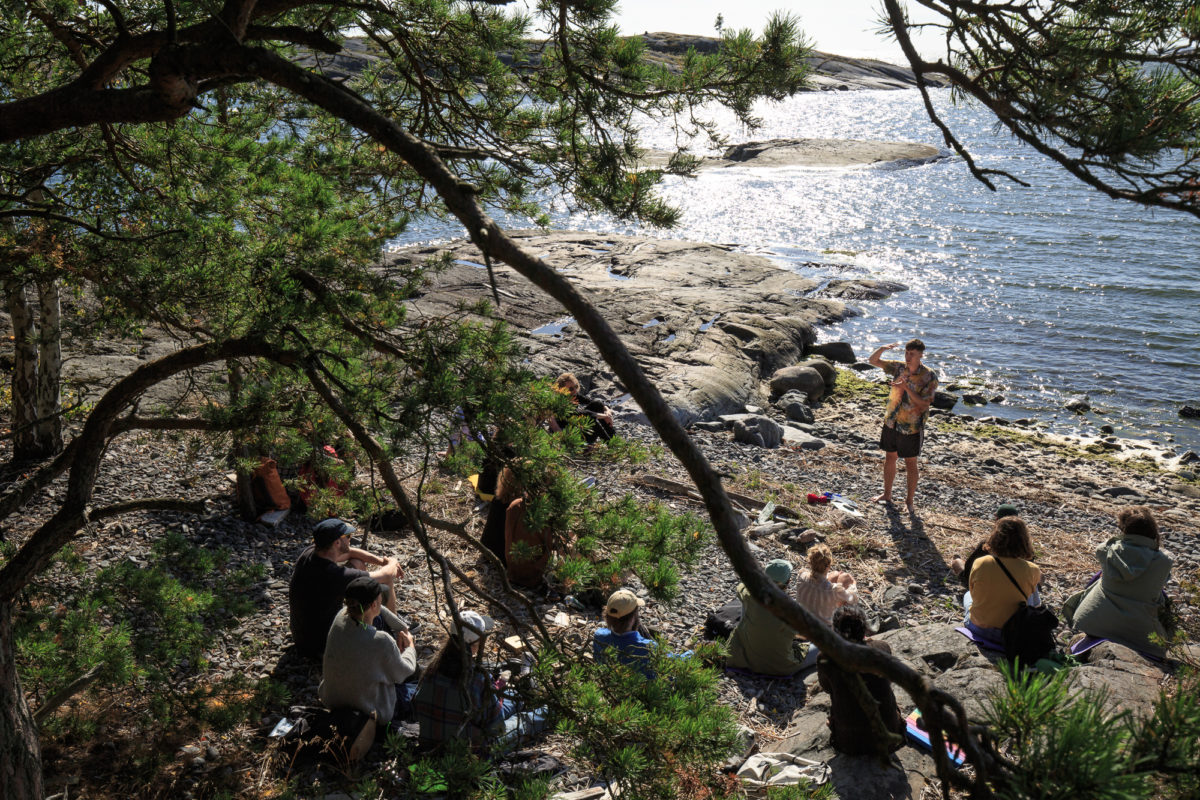Riikka Thitz
Riikka Thitz is a Helsinki-based curator whose work centres on the bodily experience of being in the world. Riikka’s practice is based on the idea of interweaving the public presentation methods of performing arts and visual arts, and working with these changes. Her projects range from exhibitions and performances to site-responsive projects.
Riikka is interested in how the modalities of performance and exhibition affect the forms and temporalities of presenting art, as well as the spaces in which they occur. She focuses on the frictions that appear when different art forms meet both architecturally and conceptually.
Riikka’s practice is driven by site-responsive approaches that acknowledge the unique interplay and rhythms between spaces, artworks, and the audience, as well as by sensing and feeling materialities. The emphasis of Riikka’s practice is on bodily experience and multisensory engagement, reflecting an awareness of how art can be perceived beyond a visual experience.
Dramaturgy is incorporated in Riikka’s practice as a tool for analysing and exploring the multisensory, felt experience of the world that often escapes language. Dramaturgy has given her a vocabulary to structure the complex interdependencies that shape her understanding of art and the world.
Together with harpsichordist Marianna Henriksson and choreographer Anna Mustonen, Riikka runs the multidisciplinary arts association i dolci, which creates and supports collaboration between dance, music, and visual arts. i dolci aims to rethink ways and conventions of working together as two artists and a curator, as well as with different forms of art.
Riikka currently works as a curator for the Helsinki City Theatre’s Stage for Contemporary Performance. She holds a Master of Fine Arts degree in Exhibition Studies from the Academy of Fine Arts in Helsinki (2021) and a Master of Arts double degree in Euroculture (2008) from Rijksuniversiteit Groningen and Georg-August-Universität Göttingen.
During the HIAP residency, I aim to expand my thinking and networks concerning my specific curatorial tool, landscape dramaturgy (or, what curator Daniel Blanga Gubbay calls more-than-human dramaturgies). Based on the thoughts of writer Augusto Corrieri and researcher Ana Vujanović, landscape dramaturgy aims to rethink human agency and shift focus towards bodily and sensory ways of experiencing the world. Landscape dramaturgy broadens the scope and scale beyond clock-based measures of time and space, incorporating planetary cycles, geological time, and, as in Timothy Morton’s Hyperobject thinking, other expansive phenomena such as plastic or the internet.
I am specifically focusing on a project called Waterways that examines the various human relationships with the landscape and waterways of Eastern Finland. It explores the mythical, ideological, and emotional dimensions of the landscape, which is associated with purity, clear waters, and a “special relationship with nature,” as well as the magical melancholy of bright summer nights, the warmth of smooth rocks, and the transience of life.
The starting point of the Waterways project is the movement of being in place, time, and landscape: how it feels in the body to be part of something incomprehensibly vast, and how the landscape simultaneously affects the bodies of living beings. Each artist involved in the project has either a bodily connection to the Eastern Finnish landscape, deconstructing the social and political relationships related to place and its ownership.

